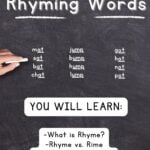Teaching Rhyming Words
This post may contain affiliate links. As an Amazon affiliate, we earn from qualifying purchases.
Most people can recognize rhyme, but few truly understand its significance or how it supports early literacy. Explore what rhyme is, why it’s essential for reading development, and effective strategies for teaching rhyme following a Science of Reading approach.
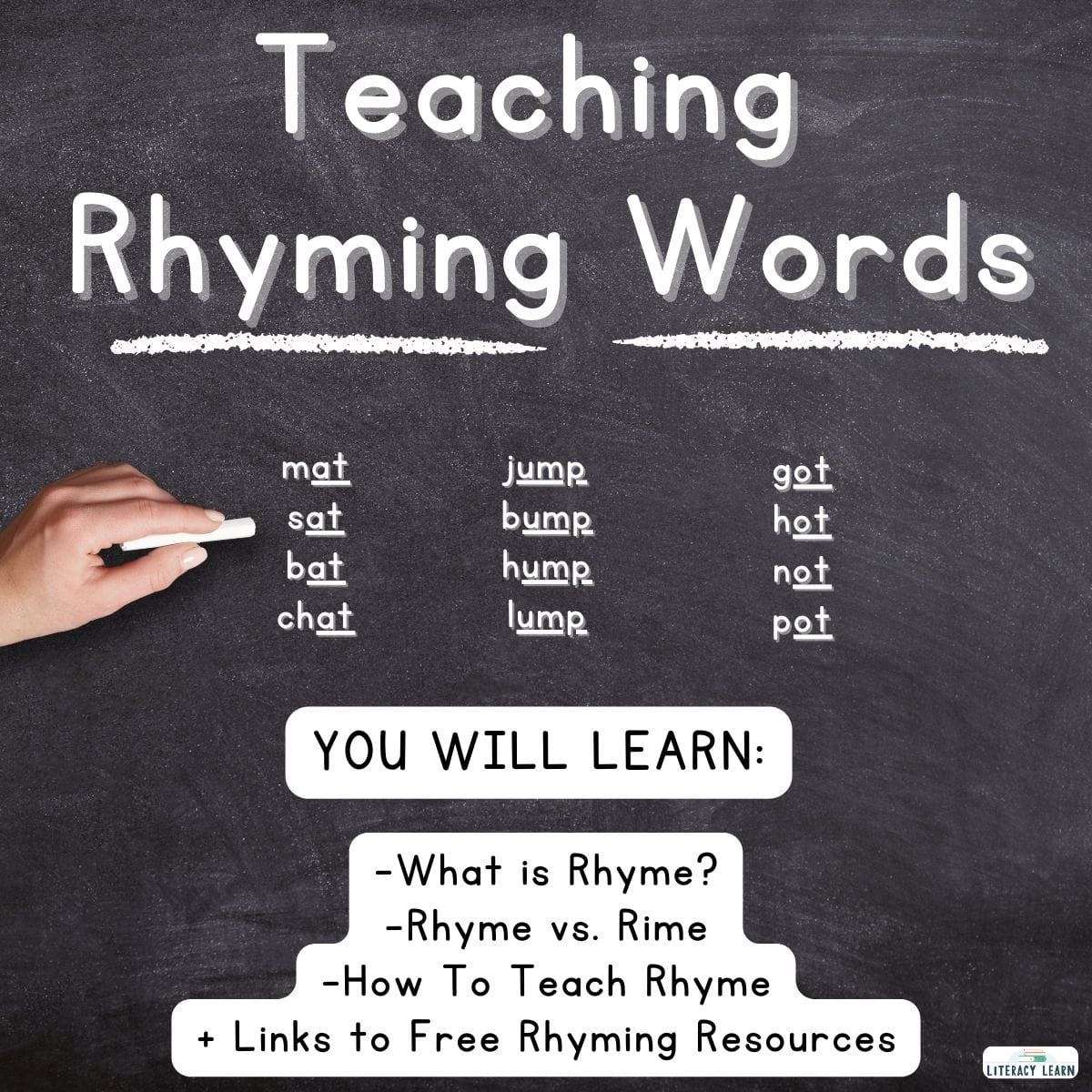
What Is Rhyme?
Rhyme is the repetition of sounds at the end of words. When words rhyme, they share the same ending sounds, starting from the vowel sound through all of the ending consonant sounds.
Words like mat, sat, hat, fat, pat, and chat rhyme. They share the same vowel and ending sounds.
Rhyming is an important skill that typically develops in preschool and kindergarten. It is considered a syllable-level skill, which is an earlier level phonological awareness skill.
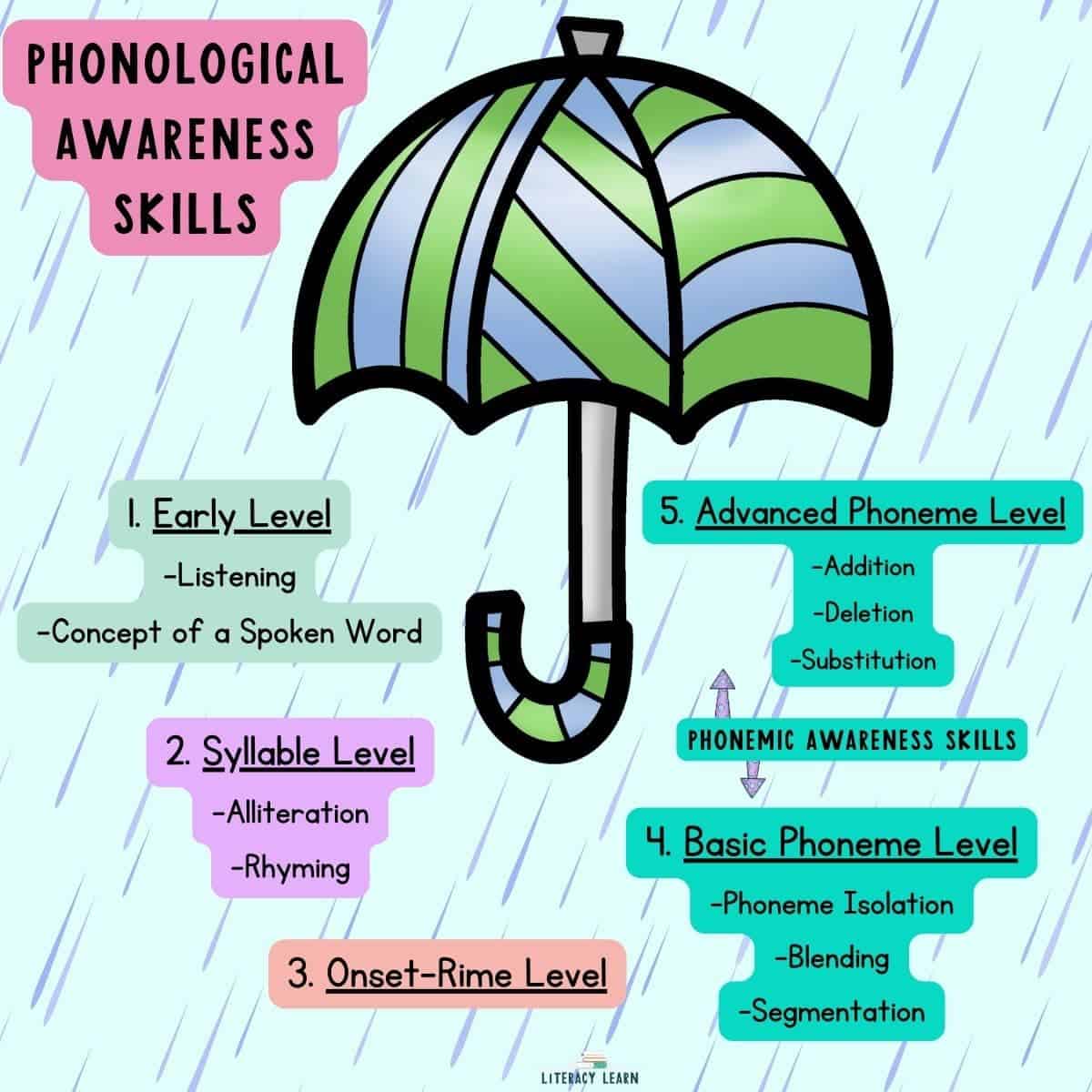
Like all phonological awareness skills, rhyme is focused on sounds (not letters). That’s why words with different letters at the end can rhyme.
🤔 Think about the words: fox & socks. They don’t look alike or include the same graphemes (letters). But they have the same phonemes (sounds), which is why they rhyme.
Want to know why this is? Dig deeper and read our posts to learn more about phonemes and graphemes & why the letter x makes two sounds!)
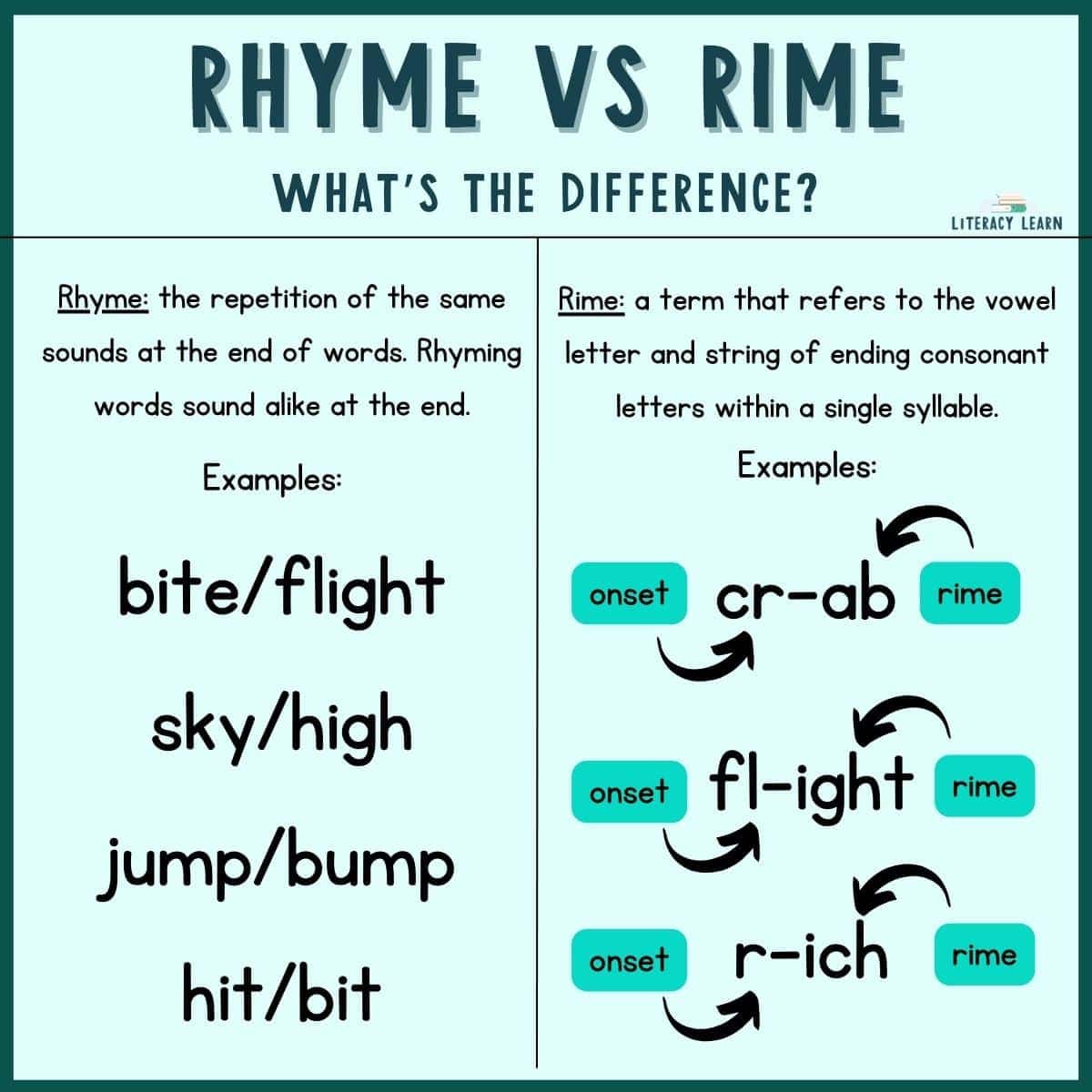
Rhyme vs. Rime
The words rhyme and rime are homophones: Two words that sound exactly the same but have different spellings and different meanings.
👉 Rhyme refers to the repetition of sounds at the end of words. For example:
- bite and flight: Both words have the long /ī/ sound followed by the /t/ sound, so they rhyme. Notice words don’t have to be spelled the same to rhyme.
- lip and dip: Both words have the short /ĭ/ sound followed by /p/, so they rhyme. In this case, the vowel and ending consonant are spelled the same.
👉 Rime is a term that refers to the vowel letter and string of ending consonant letters within a single syllable. (The letters before the vowel is called the onset.)
Here are example rhyming words broken apart into onset-rime:
- g-ab, t-ab, dr-ab, cr-ab
- d-isk, r-isk, br-isk
- j-ump, b-ump, cl-ump
- m-ove, l-ove
Notice that many of the words above that share the same rime (string of letters) also rhyme (same sound). But again, this is not always the case.
Words like move and love include the same rime, but do not sound alike so they do not rhyme.
Teaching Rhyme
In early literacy instruction, exposure to rhyme occurs through songs, poems, stories and targeted rhyme instruction, activities and games.
Teaching Rhyme in Preschool
👉 Explicit Instruction: Teachers should begin with rhyme instruction and modeling. Use explicit instruction, saying something like:
“The words big and pig rhyme. Listen for how they sound alike at the end. Listen: big-pig. Repeat these words. big-pig. Words that sound alike at the end are called rhyming words.”
Repeat this often with lots of words and examples. Use rhyming word lists list to make your instruction a breeze!
👉 Rhyme Recognition: Teachers should focus on teaching kids to recognize rhymes.
This can be done through high-quality read-alouds, nursery rhymes, rhyming games, and rhyming activities (like our 5 free rhyming worksheets 👈🏻).
Practice should include having kids identify rhyming words. Activities can include listening for, matching, pairing, or sorting rhyming words. Since kids can’t read at this stage, be sure to use activities that rely on picture support only.
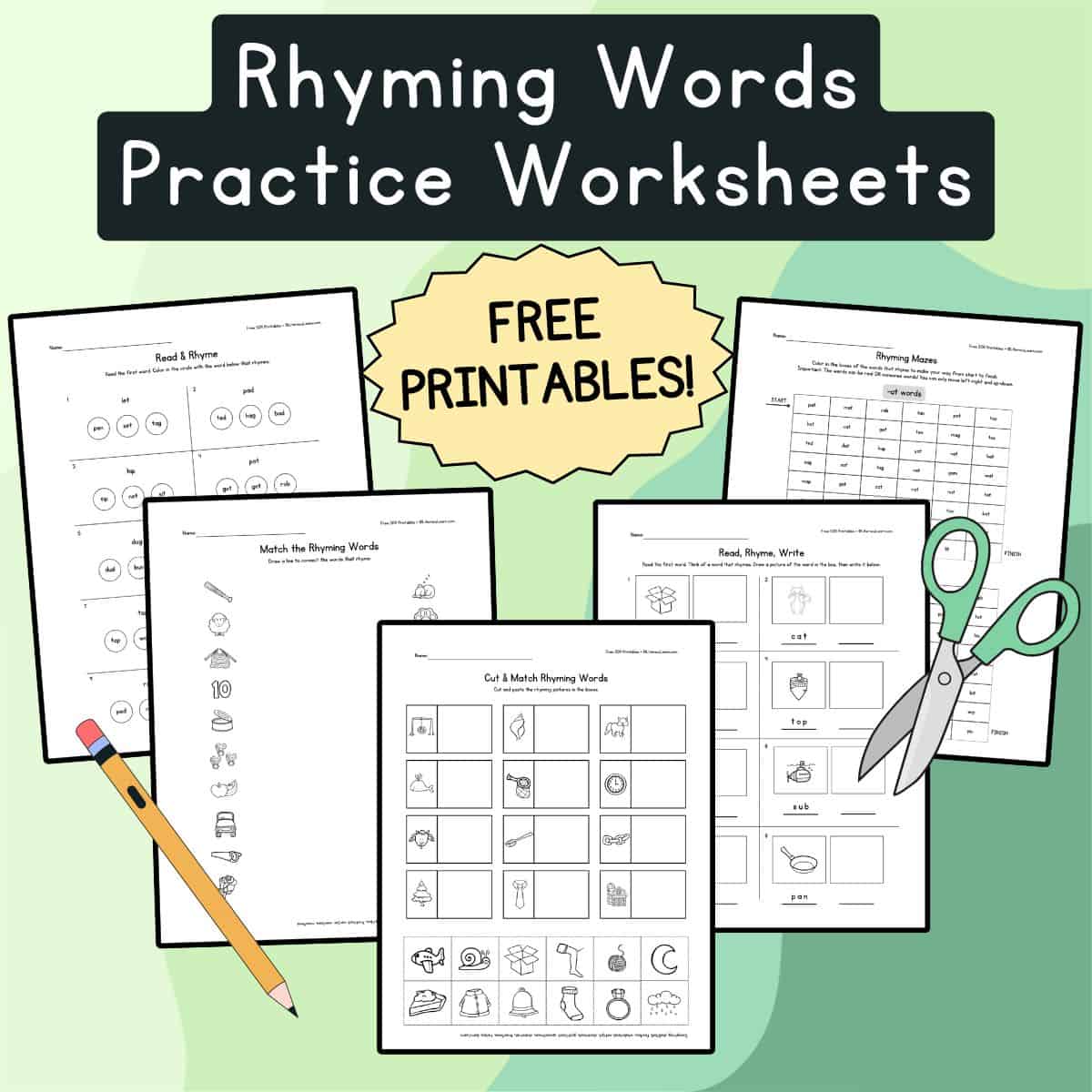
Teaching Rhyme in Kindergarten
Kindergarteners come into the classroom with varying skill levels. Some may have no concept of rhyme, while others may have mastered foundational phonological awareness skills like producing rhymes.
It’s essential to tailor your instruction based on each student’s understanding of rhyme. For those who need extra support, start from the basics and utilize the teaching strategies for preschoolers.
Producing Rhyme: Once your assessments show that students can consistently identify and recognize rhyme, it’s time to move on to have kids practice generating rhymes. This is a higher-level skill where kids have to produce a word that rhymes with another word.
You can do this by simply giving kids a list of rhyming words: hat-mat-pat. Then, ask them to generate a new word that rhymes. They can be real words or nonsense words.
I love making a game of this skill and playing “Rhyme Time” in small-group settings. I call out a word and kids repeat the word. Then, we all go around and see how many different rhyming words we can generate. We try to set a “World Record” as we count up the number of rhyming words in total.
Some other my students’ favorite rhyme games include Rhyming Bingo, Rhyming Match, and Slimy Rhymes.
Conclusion
Rhyming is an important skill. As children listen for and identify rhyme, they begin to understand how sounds work together in words.
Rhyming is focused on wordplay as children manipulate larger units of language (syllables).
Once kids know their letters and sounds, begin introducing the written words with the spoken words.
Rhyming builds an awareness of word families: words that look and sound alike at the end (they rhyme and have the same rime). Using a word family chart (👈🏽 get our free one!) helps to build knowledge of letters and sounds as they begin to read and spell.
Overall, rhyme serves as a fun and effective tool in building the foundation for strong reading skills.
Recommended Resources
Learn more about other Phonological Awareness (PA) skills by visiting our related posts:
⭐ Get these resources for building Phonological Awareness skills:

